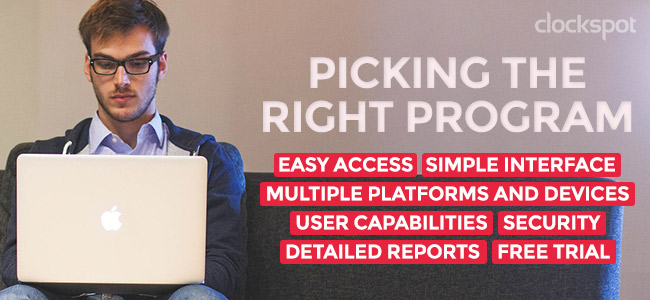Growing a business involves so much more than selling more. It also includes developing a set of organizational processes that will save you time and money.
That’s why keeping track of your employees and their time should be high on your list. When your team of employees or contractors reaches a level where gathering information for payroll takes hours upon hours, it's time to upgrade the employee time tracking system and considering an online time clock could be a great decision.
Why Focus on Your Time Tracking?
While time tracking may seem trivial, it can do more for your business than just log time. It can actually help your business run better and more efficiently.
WARNING!
An employee is stealing from you.
Download our free ebook to eliminate your risk.
In fact, time tracking can help you:
-
Find your ideal processes. If you want to know how your employees spend their time, or how many projects are just too many for them to take on, time tracking can help. By careful analyzing your time reports, you can discover the best processes for your business, and discover ways to maximize time and profits.
-
Stick to deadlines. Tracking employees’ time can help you plan your projects with enough allotted time to ensure they can stick to their deadlines. It can also help you avoid any scope creep and offer transparency on billable projects.
-
Unify your team. If you keep track of both dedicated employees and freelancers, a unified time tracking system will keep everyone on the same page, no matter where they may be working.
-
Monitor employees without spying. Do you know how much time your employees are currently wasting? According to a survey from salary.com, 31% of employees waste anywhere between 30 minutes to an hour each day. Sixteen percent of them waste about 2 hours a day, at least 6% waste 3 hours a day and a surprising 4% say they waste 4-5 hours each day.
Using time tracking can help you eliminate this time-wasting, without spying on your employees.
Picking the Right Program

Once you’re ready to make the switch to an advanced time tracking system, how do you know which program is best for you? While there are quite a few options, here’s what you should look for:
Easy Access
You want something that’s going to make your job easier, not harder. By choosing a cloud-based program, you’ll have instant access, with no software to install. With minimal setup, you can get started tracking right away.
Simple Interface
More than set up, you want to find a program that is easy to use and understand. Programs with understated, yet thorough, interfaces are easy to get the hang of.
Multiple Platforms and Devices
If you plan to use your program solely in the office, then access really doesn’t make a difference. But for most people, the option to use a program on their home computer – or even their mobile phone – is a huge plus.
You may also want your employees their own accounts whenever, and wherever.
User Capabilities
How many users will be using the program? Do you need something that supports just a small pool of people, or a large group? Look at user capabilities, but also look at costs. Will you get charged per user, and if so, how much?
Detailed Reports
What type of detailed reports can you print, and how easy are those reports to generate? Can you customize reports to show the specific information your business needs?
Security
A lot of company and employee data will go into your time tracking program, so whatever you choose should be secure. Look for options that are encrypted and protected.
Free Trial
You want to try before you buy. A good program will offer you either a free trial or a live demo so you get a feel of how the program works before committing to it.
If you do get a trial, put your program through the wringer; go through a week of work, tracking time, printing reports and more. Make sure you have all the services you need are there, and that they work well.
Tips for Making the Switch
Speaking of spying, any type of tracking system can make your employees feel like they are being constantly monitored – that you don’t trust them.

While the above stats suggest they do need to be monitored, you don’t want employees to feel that way.
Avoid this by using these tips for making the switch to an advanced employee time tracking system.
Explain Why You’re Using Time Tracking
You may get come resistance to the change, so be prepared by explaining why you are implementing this system. Let employees know that time tracking will help you streamline processes and better estimate deadlines.
It will ensure they’re paid for the hours they put in, and avoid any extra unpaid work on projects that take longer than expected.
Include Downtime and Breaks
Don’t expect employees to work 8 hours straight each day. Be sure to include break time, lunches and time for brainstorming and interacting.
This downtime isn’t unproductive; quite the opposite. In fact, taking short breaks may increase productivity, improve mental clarity and help reduce fatigue.
Reward Good Performance
Because you will be tracking what your employees are working on, consider rewarding great performance. Take the focus off those who aren’t measuring up, and focus on the good.
Reward, or at least acknowledge, anyone who meets project deadlines. Turning deadlines into a friendly competition could be the motivation some employees need to get moving.
As your business grows, so should the way you organize your business.
Employee time tracking is one way to monitor your business and make sure things are running smoothly. Unless you know where your time’s going, you could be wasting too much of it – and leaving money on the table.